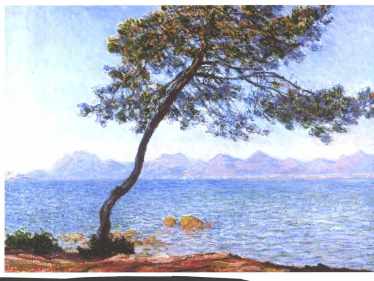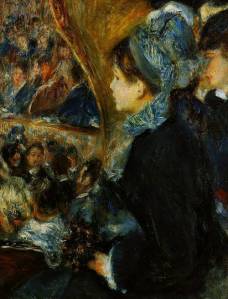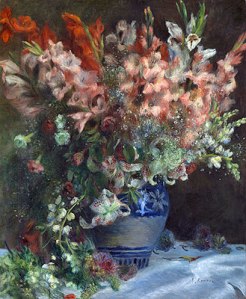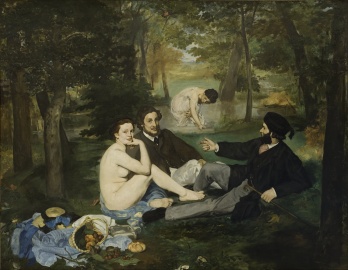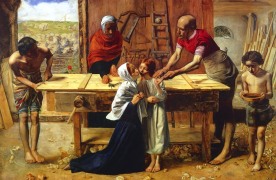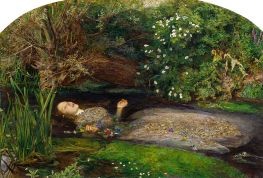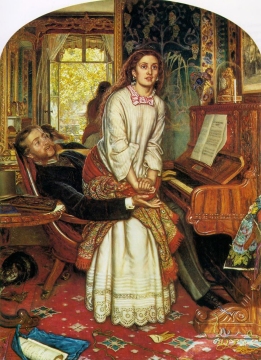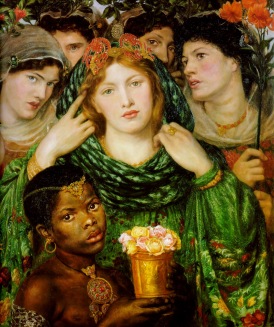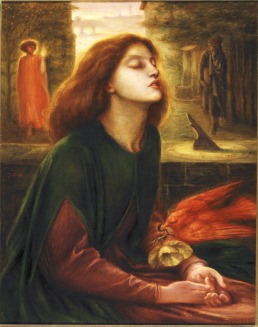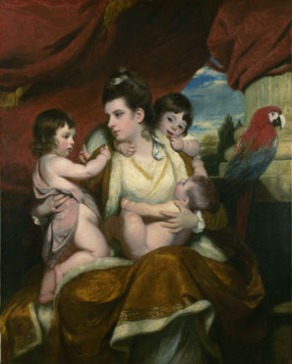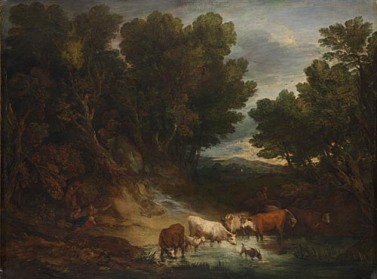1. Claude Monet– Monet is one of the founding fathers of Impressionism. In fact, the term “Impressionism” is derived from the title of his painting Impression, soleil levant. Monet started with charcoal caricatures and drawing lessons when he was in secondary school. During his teens, Monet moved to Paris to live with his aunt. It was here that he met Manet and other local artists who would eventually be fellow Impressionists. During the Franco-Prussian War, Monet and his family fled to England to seek refuge. While in England, he studied the works of John Constable and Joseph Mallord William Turner. Both of these artists are known for their landscapes, and they both influenced Monet and his interest in the study of colour.
Vase of Flowers was started during the early years of Monet’s career. He focused on painting still-lifes, such as this vase of flowers, but grew very frustrated with it when he could not quite capture them the way he desired. Monet abounded the painting all together and let it sit in his studio for forty years before returning to it and finishing it toward the end of his life. One of the first things noticed about this painting at first glance are the brush strokes. The strokes on the table, the vase, and the background blend in together, making the whole painting seem very fluid. He uses a similar yellow in the shadow on the table to that of the background. The strokes on the pedals almost make the form of the painting appear 3D. The slight slant of the table top is complimented by the slight slant of the flowers at the top, going from the top right of the painting and sloping down and to the left. Monet leaves very little empty space on the painting; the flowers take up basically the whole canvas.
Another work of his, Antibes, was created in 1888 which was a bit later on in his career. it is presumably named after the coastal town in France. This work exhibits similar qualities in all creation aspects to Vase of Flowers. The brushstrokes again seem to blend into one another and mix colors at their edges. There is most definitely a golden section. The 3/8 portion is on the left hand side of the painting while the right 5/8s is the focal point. the photo gives an atmosphere of calm and serene using lots of blues and pale pinks and purples in contrast to the earthy browns and greens in the tree. There is an aspect of 3D in the perspective of the painting as you see the waves fade into the background and then transition into the mountains. Unlike in the flower painting, Antibes has a lot of free space not taken over by the tree in the foreground.
2. Pierre-Auguste Renoir- Renior began painting as a young boy when he had to paint designs on fine china in a factory. Due to the turmoil of the Franco-Prussian War, it was hard for Renior to find supplies for his paintings. But in 1874, he had six of his paintings hung in the first ever Impressionist exhibition.
At the Theater (left) is clearly an Impressionist work of art. Renoir uses very free brushwork. None of the people in the background are in focus or are distinguishable. They also set the scale of the rest of the painting, making it clear that the viewer is virtually next to the girl in the blue. She creates contrast with the rest of the theater considering she is much darker. Renoir uses very interesting colours as shading, specifically the green on her chin. This make her blend with the background more, a very common tactic of Impressionistic work. The balcony just to the left of the girl along with the woman behind her separates the painting into three sections. This framing of the girl ensures that she is the focus of the painting.
Gladioli in a Vase (right) is similar to Monet’s Vase of Flowers. A golden section is created on the left of the painting, with the flowers flowing down the left of the vase creating a curtain for the rest of the painting. It is clear that the light source is coming from the right based on the shadows on the tablecloth. The big brush strokes cause the colours to fade and blend together, specifically on the left of the painting where the flowers blend with the dark background.
3. Edouard Manet
Edouard Manet is another huge name from the early impressionist movement. He is a French painter who began with a very different predestined occupation. Manet was on the road to becoming a practitioner of law before he rejected this notion and chose instead to pursue his passion of painting and in time achieved great fame in his craft.
His piece entitled Le Dejeuner Sur L’Herbe is an exemplary piece that sparked quite a controversy in its time due to its depiction of an “ugly” naked woman accompanying well dressed men. This piece shows a fair amount of impressionist details while still holding an identity of its own. the leaves on the trees in the background are made of greens and yellows, as expected, but have blended in brown and white from the areas around it, the common characteristic of an impressionist style. But unlike most impressionist works, the woman herself has much more of a thick and opaque shading with more solid outlines surrounding her to distinguish her from the background and pull her into the focus a bit more. She is also noticeably more white. the figure in the background can be seen in a not totally discernible position, although you know she is bending down in some form and her significance in the painting is not apparent at a glance.
Then, in one of his latest pieces, A Bar at the Folies-bergere, we see an interesting take on the impressionist style. Here, instead of the more common scenery, we see a crowded room with lots of people overtaking the background and not much open scenery to paint. Manet pulls this off well though by fading all the out of focus faces into one another and drawing your eye directly into the gaze of the barmaid. the only other remotely distinguishable characters are the face of a man and the back of another woman in the background. once again we see the previously stated blending of colors all of this piece, like with all impressionist arts. the piece is mainly in simple colors such as off-whites, dark blues, treys, and blacks. There is some contrast here in the pinky-red champagne bottle by her left shoulder and the oranges in the bowl to her right. There is quite a bit of balance in this painting as the bottles are evenly spaced on either side of her and the big chandelier on the left balances the weight of the two people on her right.


